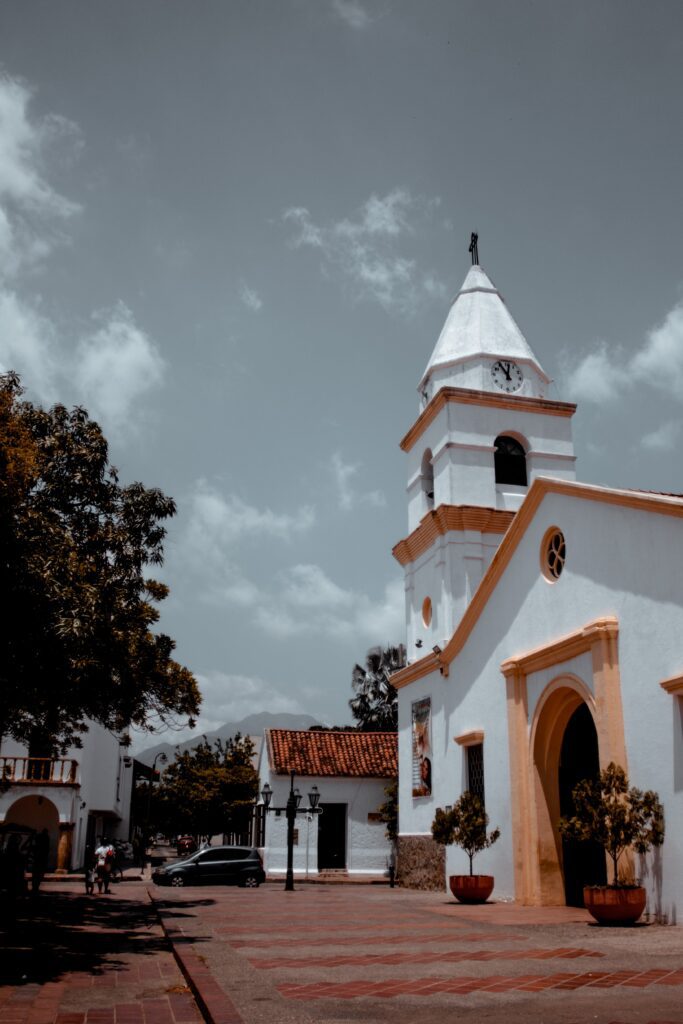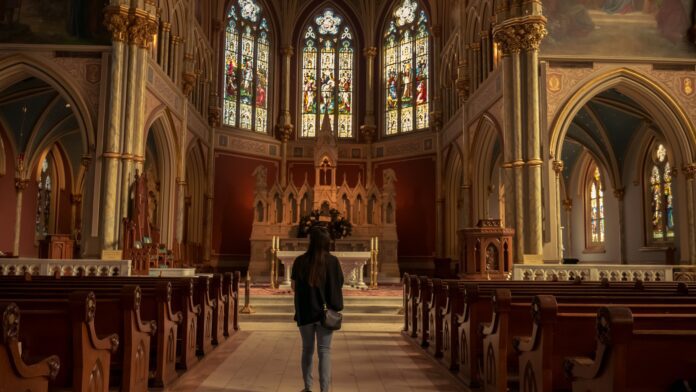What is church

The word “church” has several different meanings depending on the context. Here are some of the main interpretations:
1. Religious meaning:
Christian Church: In Christianity, the church refers to the entire body of believers in Jesus Christ, both past, present, and future. It also can be used to describe a local congregation of Christians who meet regularly for worship and fellowship.
Other religions: Other religions may also use the term “church” to refer to their communities of faith. For example, the Church of Jesus Christ of Latter-day Saints and the Church of Scientology both use the term in this way.
2. Building:
Place of worship: A church can also refer to the physical building where Christians gather for worship. These buildings are typically designed with specific features to facilitate religious services, such as an altar, a pulpit, and pews.
3. Organization:
Governing body: In some denominations, “church” also refers to the official organization that governs the faith. This organization may be responsible for ordaining clergy, overseeing church property, and establishing doctrine.
4. Figurative meaning:
Metaphor for community: Sometimes, “church” is used figuratively to represent any community of people united by a common belief or purpose. For example, someone might say that their family is their church, meaning that their family provides them with the same sense of belonging and support that they would find in a religious community.
It’s important to consider the context in which the word “church” is used to understand its intended meaning. If you’re unsure what someone means when they say “church,” it’s always best to ask for clarification.
List out Worldwide Famous Christian church

list of some of the most renowned Christian churches globally, highlighting their historical and architectural significance.
1. St. Peter’s Basilica, Vatican City, Italy: St. Peter’s Basilica is a masterpiece of Renaissance architecture and one of the most significant churches globally. Located in Vatican City, it is a major pilgrimage site and the symbolic heart of the Catholic Church.
2. Notre-Dame Cathedral, Paris, France: Notre-Dame is a masterpiece of French Gothic architecture, situated on the Île de la Cité in Paris. Despite the tragic fire in 2019, its cultural and historical significance remains immense.
3. Sagrada Familia, Barcelona, Spain: Designed by renowned architect Antoni Gaudí, Sagrada Familia is a unique and intricate basilica in Barcelona. Construction began in 1882 and continues today, making it an ongoing symbol of architectural innovation.
4. Westminster Abbey, London, United Kingdom: Westminster Abbey is a gothic masterpiece and a significant location for royal ceremonies and burials. Its history dates back over a thousand years, and it stands as a symbol of British history and culture.
5. Cologne Cathedral, Cologne, Germany: Cologne Cathedral is a stunning example of High Gothic architecture. Its twin spires dominate the skyline of Cologne, and it is a UNESCO World Heritage Site, attracting millions of visitors annually.
6. St. Paul’s Cathedral, London, United Kingdom: St. Paul’s Cathedral is an iconic Anglican cathedral with a dome that provides breathtaking views of London. It has played a central role in British history and is renowned for its architectural grandeur.
7. Basilica di Santa Maria del Fiore (Duomo), Florence, Italy: The Florence Cathedral, known as Duomo, is a masterpiece of Italian Renaissance architecture. Its iconic dome, designed by Filippo Brunelleschi, is a symbol of Florence.
8. St. Patrick’s Cathedral, New York City, USA: St. Patrick’s Cathedral is a neo-Gothic masterpiece located on Fifth Avenue in Manhattan. It is the seat of the archbishop of the Roman Catholic Archdiocese of New York.
9. Christ the Redeemer Church, Rio de Janeiro, Brazil: Christ the Redeemer, while not a traditional church, is an iconic symbol of Christianity. The colossal statue of Jesus Christ overlooks Rio de Janeiro from the summit of Mount Corcovado.
10. Basilica of the Sacred Heart, Paris, France: Commonly known as Sacré-Cœur Basilica, this white-domed basilica is perched on the highest point in the city. It offers stunning panoramic views of Paris.
List of Famous Christian church in India
Basilica of Bom Jesus, Goa: This UNESCO World Heritage Site houses the remains of Saint Francis Xavier, attracting pilgrims and tourists worldwide.
Santa Cruz Basilica, Kochi: This majestic church, known for its Indo-Portuguese architecture and unique murals, holds historical significance in the Kerala region.
CSI Mateer Memorial Church, Chennai: A prominent landmark in Chennai, this church features Gothic architecture and is known for its social work and community outreach.
Velankanni Church, Tamil Nadu: Also known as the Basilica of Our Lady of Good Health, this pilgrimage center draws devotees from across India and beyond for its miraculous healing stories.
St. Thomas Cathedral Basilica, Chennai: This ancient church, believed to be founded by the Apostle St. Thomas, holds immense historical and religious significance for Christians in India.
St. Philomena’s Church, Mysore: A stunning example of Gothic Revival architecture, this church is known for its intricate stained glass windows and serene atmosphere.
Se Cathedral, Old Goa: This imposing structure, built in the 16th century, is a testament to Portuguese colonial architecture and houses relics of Saints Francis Xavier and St. Paul.
Mary Immaculate Church, Mumbai: This iconic landmark, with its Gothic Revival architecture and clock tower, is the largest church in Mumbai and a popular tourist destination.
San Thome Basilica, Chennai: This church, believed to be built over the tomb of St. Thomas, is a popular pilgrimage site and holds significant religious importance for Christians in India.
Holy Trinity Cathedral, Kolkata: A beautiful example of Gothic architecture, this church is known for its stained glass windows and is one of the oldest Anglican churches in India.
This list only represents a few of the many incredible Christian churches in India. Each church boasts its unique history, architecture, and religious significance, contributing to the rich cultural tapestry of the country.
Conclusion: The Significance of Christian Churches in India
Christian churches play a multifaceted role in India, influencing the nation’s cultural, historical, and social landscapes. From ancient structures like St. Thomas Cathedral Basilica to modern marvels like the CSI Mateer Memorial Church, these churches stand as testaments to the faith’s enduring presence and impact.
Cultural Influence: Christian churches have significantly influenced Indian art, architecture, music, and literature. Architectural styles like Gothic and Indo-Portuguese have been incorporated into numerous churches, showcasing a unique blend of European and Indian aesthetics. Hymns and carols have enriched the country’s musical tapestry, while Christian literature has contributed to its diverse literary landscape.
Historical Significance: Many Christian churches in India are steeped in history, serving as silent witnesses to significant events. Some churches, like the Basilica of Bom Jesus, preserve relics of saints, attracting pilgrims and offering insights into the past. Others, like the St. Thomas Cathedral Basilica, stand as reminders of early Christian missionaries and their impact on the region.
Social Impact: Christian churches in India are actively involved in social work and community outreach, running schools, hospitals, and orphanages. They provide essential services to the underprivileged, regardless of their religious affiliation, contributing to social welfare and development. Additionally, churches promote interfaith dialogue and understanding, fostering a sense of unity and community spirit.
Future Perspectives: As Christianity continues to grow in India, its churches will likely play an even more prominent role in shaping the nation’s future. Churches can foster religious tolerance, promote education and social justice, and contribute to strengthening the nation’s rich cultural heritage. By embracing their multifaceted roles, Christian churches in India can continue to positively influence the lives of individuals and communities, paving the way for a brighter future.
Overall, Christian churches in India are not just places of worship; they are integral parts of the nation’s cultural fabric, historical tapestry, and social landscape. Their enduring presence and significant contributions continue to shape the country’s present and future.
